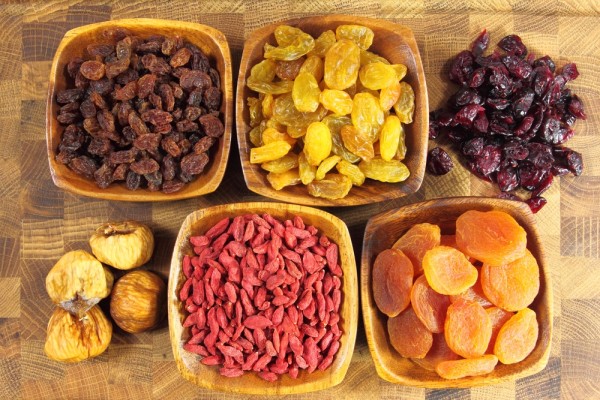By Janis Jibrin, M.S., R.D., Best Life lead nutritionist
I just dotted my opened-faced peanut butter sandwich with dried cherries (and a little bit of honey) and wondered, “How much nutrition is left in these cherries, or other dried fruit, for that matter?” Quite a lot, I discovered after consulting recent studies. While vitamins, like vitamin C, may dwindle with drying, phytonutrients—beneficial plant compounds—remain.
Here’s what I found:
Dried Cherries
I buy “sour” or “tart” cherries, and a study in the Journal of Food Science found that these dried fruits are rich in compounds that clobber two types of free radicals, harmful molecules that promote heart disease, cancer and neurological disorders.
In addition to peanut butter sandwiches, I use dried cherries in pilafs and cereal. But you can get a lot more creative with them; for instance, the other night I went out for pizza and ordered one with a dried cherry pesto! Weird, but good. They also pair well with dark chocolate, as in these oatmeal cookies.
Dried Cranberries
Fresh cranberry season is so short that most of the year, dried cranberries are the only option. Because they’re unbearably tart, the dried version is coated with a little sugar syrup, which is OK because you’re also getting a dose of proanthocyadins, a phytonutrient that helps prevent urinary tract infections. They also strengthen blood vessels and may help slow down the progression of retinopathy, an eye disease that’s common in people with diabetes.
Dried cranberries work in grain-based recipes (as in this chicken and couscous dish), cereals, energy bars and salads.
Dried Figs
Dried figs are even higher in beneficial phenolic compounds than fresh figs. For example, they contain catechin and epicatechin, two of the compounds that give tea its heart-disease-fighting powers. All figs are phytonutrient-rich, but the dark black mission type contain the greatest amount.
There’s a big difference in taste and moisture among different types (and even brands) of dried figs, so it’s worth a little trial and error to find ones you like. They pair beautifully with walnuts as a snack, and can even be thrown in the blender, as in this shake recipe.
Raisins
They rank in the top quarter of foods for their antioxidant power. Regular raisin consumption has been shown to lower blood pressure, LDL (bad) cholesterol, and triglycerides, according to a recent University of Kentucky review of the research.
If you’ve always had one type of raisin, there’s reason to branch out—golden, muscat, Sultana zante currant and others are distinctively delicious. More unusual ways to use them: with popcorn, in hummus, and even as part of a Banana Raisin Cole Slaw (you read that right!).
Also Read:
If You Only Keep One of Your Resolutions, Make it More Fruit

